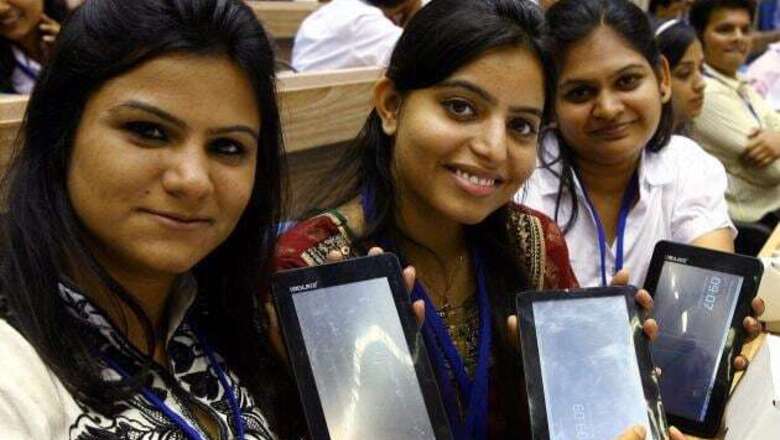
views
Bangalore: The low-cost Aakash tablet PC will be made completely indigenous and its production base diversified, HRD Minister Kapil Sibal today said.
"We are now going to diversify production base and indigenise Aakash tablet. We are planning to create eco-system for end to end development of Aakash in India. This will create enormous opportunities for R&D institutions, developers, electronic production houses," he said at a function here.
He said the IITs and the ITIs are onboard on development of the device which has so far reached out to a handful of students.
The HRD Ministry has already said that it will require an additional 22 crore units of Aakash and for this fresh tenders will be issued enabling other companies along with the present manufacturer Datawind to also get a chance.
At present, the device is available to students at Rs 1,100 after government subsidy.
Asked if the next tender will have 'made in India' clause in it, Sibal said, "Well, we want to make sure that it is 100 per cent done locally ultimately." At present, several components including the processor are procured from outside.
At the event of Indian Semi Conductor Association, he said, "I want all of you present here to think about it and be part of this magnificent journey."
The government in the meantime plans to involve three more IITs for the Aakash project to make it more indigenous and further lower its price.
Apart from IIT Rajasthan, which is spearheading the project, IIT Mumbai, IIT Madras and IIT Kanpur would also be roped in for the project, sources in the HRD Ministry said.
The speed of the improved device will come at 800 MHz instead of 300 MHz at present.
The diversification would result in Aakash tablet's cost coming down to Rs 1,500.
Sibal said the tablet costs Rs 2276 now (based on the order for one lakh units) and it would come down to Rs 1,500, including profit and transportation, when the (order) number goes up to 10 lakh.
Of this Rs 1,500, the government would give subsidy of Rs 750 to educational institutions, which would pay the remaining amount so that the low-cost device gets into the hands of students free-of-cost, he said.


















Comments
0 comment